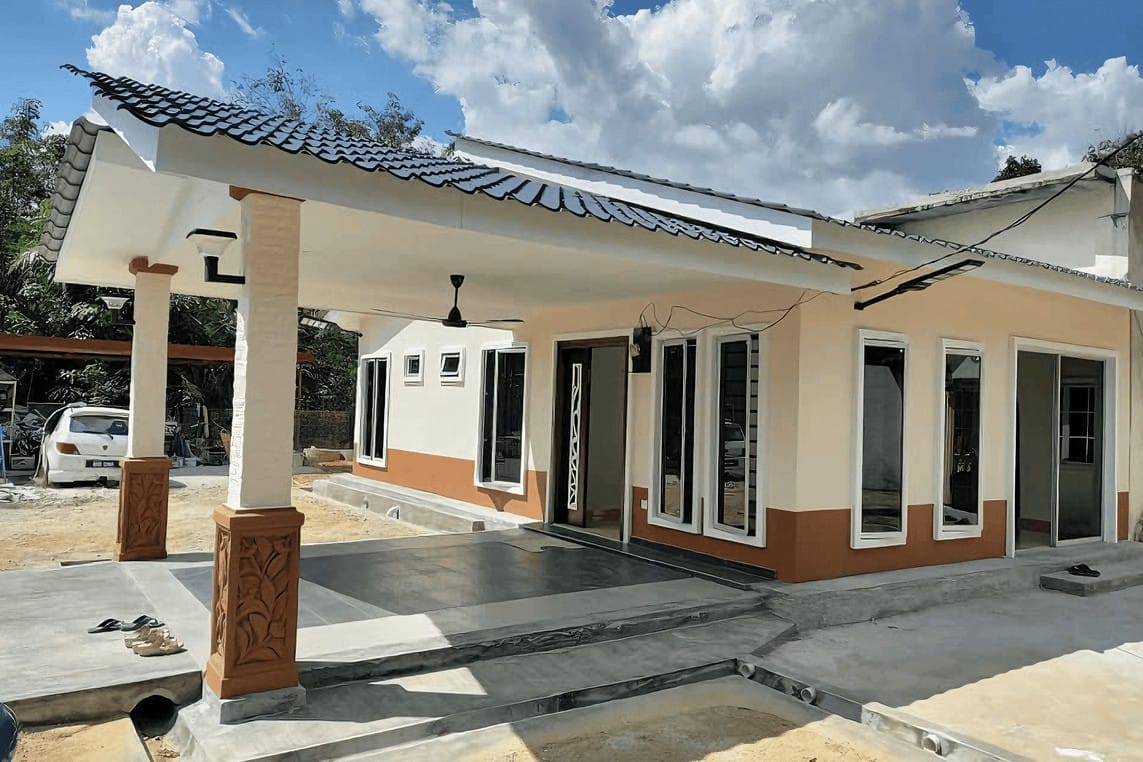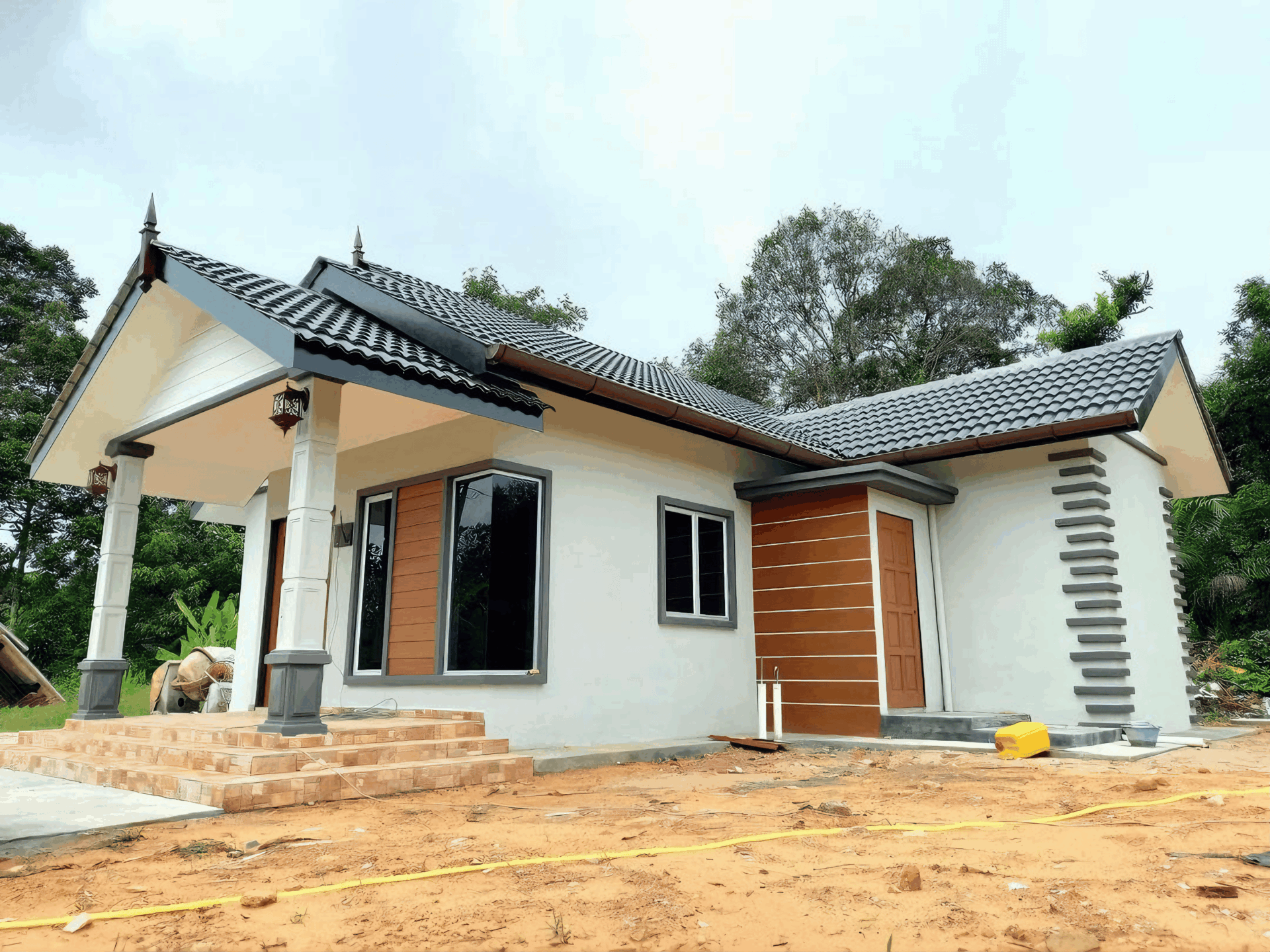In the bustling world of home construction, where dreams and blueprints come together, one thing often gets overlooked: the importance of clear, transparent contracts. Picture this: you’re about to embark on one of the biggest journeys of your life—building your dream home. The excitement is palpable! But wait, what about the fine print? If you think contracts are just boring documents filled with legal jargon, think again. Transparent contracts are like your safety net, helping you avoid unexpected pitfalls and misunderstandings along the way. In this article, we’ll dive into the reasons why having a crystal-clear agreement with your builder isn’t just a good idea; it’s an absolute must-have in the Malaysian construction scene. Let’s get started and ensure your home-building adventure is smooth and stress-free! 🏡✨
Benefits of Transparency in Home Construction Agreements
One of the most significant advantages of clear communication in home construction agreements is the peace of mind it offers to homeowners. When all terms and conditions are laid out transparently, it drastically reduces misunderstandings. Homeowners gain a better understanding of what to expect during the construction process, which can lead to fewer surprises and disappointments down the line. Imagine knowing precisely what you’re paying for and getting exactly that; it’s like having a detailed map on a journey that often has many twists and turns!
Moreover, transparency fosters trust between homeowners and contractors. When both parties are upfront about costs, timelines, and project scope, it builds a solid foundation for collaboration. Trust ensures that everyone is on the same page, which can be particularly critical in a field as intricate as home construction. An open dialogue about progress and setbacks helps cultivate an environment where feedback is welcomed and issues can be addressed swiftly. After all, a happy contractor often means a happy homeowner!
well-defined agreements enhance accountability. When all parties know their roles and responsibilities, there’s a clear path to follow throughout the construction process. This understanding can simplify the resolution of disputes, should they arise, as everyone has a reference point to go back to. Here’s a simple breakdown of key components to look for in transparent contracts:
| Component | Description |
|---|---|
| Budget | Detailed breakdown of costs including materials, labor, and contingencies. |
| Timeline | Clear milestones and completion dates to track progress. |
| Specifications | Exact materials and workmanship required for the project. |
| Change Orders | Process for handling changes or modifications to the original scope. |

Building Trust Through Clear Contract Terms
In home construction, clear contract terms serve as the backbone of trust between homeowners and contractors. When everyone knows what to expect, it not only reduces misunderstandings but also fosters a sense of accountability. This is especially important in Malaysia, where cultural nuances may lead to differing interpretations. By ensuring that contracts are straightforward and detailed, both parties can feel secure in their commitments and responsibilities.
A well-structured contract should cover essential aspects such as:
- Project Scope: Clearly define the work to be done, including materials and labor.
- Timeline: Specify start and completion dates, along with any milestones.
- Payment Terms: Lay out the payment schedule, amounts, and methods accepted.
- Change Orders: Outline how alterations to the project will be managed and billed.
- Liability and Insurance: Detail the coverage for any potential damages or accidents.
It’s beneficial for both parties to have a clear understanding of these terms. To illustrate, here’s a simple comparison of two contract approaches:
| Traditional Contract | Transparent Contract |
|---|---|
| Vague project descriptions | Specific details on materials and procedures |
| Verbal agreements | Written and detailed agreement |
| Surprise costs | Clear payment breakdowns |
| No room for changes | Defined process for change orders |
By adopting transparent contracts, both contractors and homeowners can navigate the home construction process with greater ease and confidence. This not only enhances the experience but also lays the groundwork for positive referrals and future collaborations. Ensure your contract is a tool for clarity, not confusion.

Avoiding Disputes with Detailed Scope of Work Descriptions
When diving into a home construction project, everyone involved wants a smooth experience—free from misunderstandings and surprises. This is where a detailed scope of work (SOW) comes into play. Creating a comprehensive SOW not only sets clear expectations but also serves as a reference point throughout the project. By defining specific tasks, timelines, and responsibilities, you help minimize the potential for disputes that could arise from ambiguity.
An effective SOW should include:
- Clear Task Descriptions: Break down each phase of the project clearly, from foundation work to final touches.
- Timeline Expectations: Provide realistic deadlines to avoid conflicts over project duration.
- Roles & Responsibilities: Specify who is in charge of what, making accountability a shared goal.
- Budget Details: Outline costs associated with materials and labor to prevent financial misunderstandings.
Additionally, incorporating a table to summarize critical elements can boost clarity:
| Phase | Tasks | Assigned To | Due Date |
|---|---|---|---|
| Foundation | Excavation, Pouring Concrete | Contractor A | Week 2 |
| Framing | Structure Setup | Contractor B | Week 4 |
| Finishing | Painting, Flooring | Contractor C | Week 6 |
Having all this laid out in a transparent contract not only fosters trust between you and your contractors but also equips you with the tools needed to navigate any bumps along the road. a detailed SOW can lead to smoother communication, which is the backbone of any successful construction project.

How Transparent Pricing Can Save Homeowners Money
In the realm of home construction, transparent pricing is more than just a buzzword; it’s a game-changer for homeowners looking to stay financially savvy. When contractors lay out all costs upfront, it eliminates nasty surprises down the road. With a clear view of what to expect, homeowners can effectively budget and allocate funds to various aspects of their projects without fear of hidden fees or unexpected charges.
When transparent pricing is at play, it’s easier for homeowners to identify the areas where they can save money. For instance, if a contractor provides a detailed breakdown of material costs, labor fees, and timelines, homeowners can weigh their options more effectively. Here’s a quick look at how homeowners can benefit:
- Comparative Analysis: Evaluate different contractors based on transparent quotes.
- Informed Decisions: Choose materials and services that fit your budget.
- Reduced Negotiation Stress: Lose the guesswork in pricing discussions.
To illustrate the potential savings, let’s look at a simple table comparing a traditional opaque pricing model against a transparent pricing model:
| Aspect | Opaque Pricing | Transparent Pricing |
|---|---|---|
| Initial Quote | Vague, with hidden costs | Itemized with clear descriptions |
| Change Orders | Unexpected price hikes | Pre-discussed with options |
| Final Cost | Often higher than expected | Within budget, as forecasted |
Ultimately, knowing precisely what you’re paying for builds trust and fosters better relationships between homeowners and contractors. By embracing transparent pricing, you arm yourself with knowledge and control over your home construction journey, resulting in greater satisfaction and potential financial savings in the long run.

Essential Elements for a Robust Construction Contract
When diving into the world of home construction, having a solid contract is like having a sturdy foundation for your house — it’s absolutely crucial! Essential elements that make a contract robust include clear scope of work, which outlines exactly what will be done and what it won’t. This clarity helps avoid misunderstandings later on. You’d want to include timelines so that everyone knows when different phases of the project will start and finish, ensuring things stay on track. Additionally, don’t forget to specify payment terms; knowing when and how much is due can prevent financial hiccups down the line.
Another important aspect to consider is change order procedures. Projects can often veer off course due to unexpected circumstances — like discovering an issue with the existing structure or a need to upgrade materials. By defining how changes in the project will be handled within your contract, you provide a straightforward way for all parties to adapt while minimizing disputes. It’s also wise to incorporate warranties and guarantees, as these provide peace of mind. Just think of warranties as a safety net, ensuring that if something goes wrong shortly after completion, there’s a plan in place for repairs.
Lastly, communication is key! Ensure your contract includes provisions for regular updates and how conflicts will be resolved. Establish a communication plan that states who will be the point of contact and how often progress meetings will be held. Plus, using an arbitration clause can help resolve disputes amicably without escalating to full-fledged legal battles. Here’s a simple table outlining these essential elements:
| Essential Element | Description |
|---|---|
| Scope of Work | Clearly define what is included and excluded in the project. |
| Timelines | Set clear deadlines for each phase of the project. |
| Payment Terms | Outline how and when payments will be made. |
| Change Order Procedures | Detail the process for handling project changes. |
| Warranties and Guarantees | Provide assurances for workmanship and materials. |
| Communication Plan | Establish who communicates progress and how often. |
| Dispute Resolution | Include methods for resolving conflicts smoothly. |

The Role of Transparency in Enhancing Project Communication
When it comes to home construction, transparency plays a crucial role in ensuring that everyone involved is on the same page. Clear communication fosters trust between homeowners and contractors, creating a more positive project environment. When contracts are transparent, they outline the terms, conditions, and expectations clearly, allowing stakeholders to understand their responsibilities and rights without ambiguity.
A transparent contract can lead to better project management by keeping all parties informed. Here are some key benefits:
- Minimized Misunderstandings: Everyone knows what to expect, which helps reduce conflicts.
- Enhanced Accountability: Clear duties mean that contractors and subcontractors can be held responsible for their work.
- Improved Progress Tracking: Regular updates become easier when the baseline agreements are clear to all.
In practice, a well-structured contract might include a breakdown of costs, timelines, and materials, presented in an easily digestible format. Consider the following example:
| Item | Estimated Cost | Completion Date |
|---|---|---|
| Foundation Work | RM20,000 | 12/12/2025 |
| Framing | RM35,000 | 12/01/2025 |
| Roofing | RM15,000 | 12/15/2025 |

Recommendations for Implementing Transparent Practices
Transparent practices in home construction not only build trust but also streamline the entire building process. One of the most effective ways to promote transparency is by clearly defining and documenting all aspects of the project. This includes scope of work, materials used, and timelines. Having well-structured documents can prevent misunderstandings and ensure that both parties are on the same page. Utilize templates for contracts that outline every requirement and detail, leaving no room for ambiguity.
Another key recommendation is to establish regular communication channels between homeowners and contractors. Setting up weekly or bi-weekly meetings can foster an open dialogue where project progress, concerns, and modifications can be discussed. Consider creating a shared online project management tool or a dedicated group chat, which can help in tracking updates and tasks in real-time. This not only enhances transparency but also allows both parties to address any issues promptly.
make it a habit to provide visual updates throughout the construction process. Whether it’s through photos or videos, sharing progress can help keep everyone informed and engaged. You can even set up a simple table format for easily digesting project milestones:
| Milestone | Completion Date | Status |
|---|---|---|
| Foundation Laying | Week 2 | Completed |
| Frame Installation | Week 4 | In Progress |
| Roofing | Week 6 | Pending |
Using these practices can significantly enhance the overall experience of home construction, making the journey smoother for everyone involved.

Case Studies: Success Stories from Transparent Contract Use
Let’s take a look at a couple of real-life examples that highlight the benefits of transparent contracts in home construction. One notable case is that of a family in Kuala Lumpur who embarked on building their dream home. By using a transparent contract, they discovered the true costs involved, from materials to labor. This comprehensive overview helped them stay within budget and avoid the common pitfall of surprise costs that often derail projects. The clarity of the contract also enabled them to enjoy seamless communication with their contractor, resulting in timely updates and satisfaction with progress.
Another interesting story comes from a small construction firm in Penang. They adopted transparent contracts to set themselves apart from competitors. The clear terms and conditions outlined in their contracts fostered trust with clients. One particularly successful project involved the renovation of a heritage building. By providing upfront details on timelines, costs, and expected outcomes, the firm completed the project ahead of schedule and received glowing testimonials. Not only did this lead to repeat business, but it also resulted in positive word-of-mouth that attracted new clients who valued transparency.
| Success Factors | Family Project | Firm Project |
|---|---|---|
| Budget Adherence | Yes | Exceeded expectations |
| Client Communication | Seamless | Excellent |
| Reputation Increase | No | Significantly |
These case studies show that the power of transparent contracts extends beyond just avoiding disputes. They pave the way for better project management and foster a sense of partnership between homeowners and builders. As seen in both cases, the dividends of transparency are clear: satisfaction, trust, and a stellar reputation. These stories are proof that when all parties are on the same page, success is not just a possibility—it’s a guarantee.
In Summary
As we wrap up our exploration into the world of transparent contracts in home construction, it’s clear that this isn’t just some fancy paperwork. It’s about laying the groundwork for trust and clarity between you and your contractor. In Malaysia, where our homes are often our most treasured investments, having a transparent contract is like having a reliable GPS for your construction journey. You wouldn’t want to get lost in a maze of hidden fees or vague promises, right?
So, whether you’re dreaming up your ideal home or tackling a simple renovation, remember that a clear contract can save you from unexpected surprises down the line. It’s all about creating a partnership built on honesty and understanding. With transparency as your guiding star, your path to building that dream home can be a smooth ride. Here’s to building with confidence and celebrating the home of your dreams—without the headaches! Cheers to making informed decisions and turning those construction aspirations into reality! 🏡🔨







